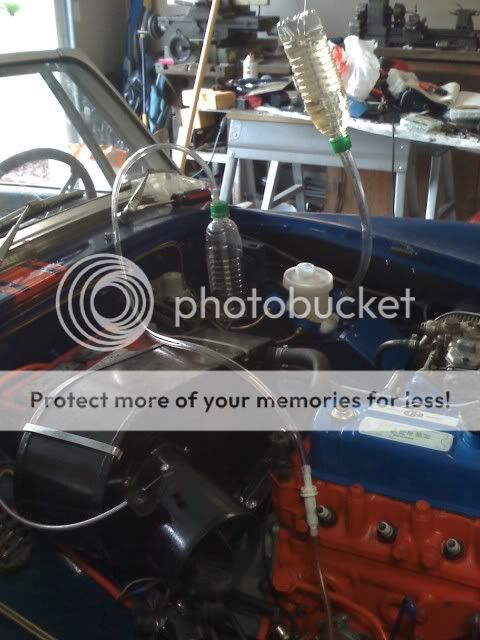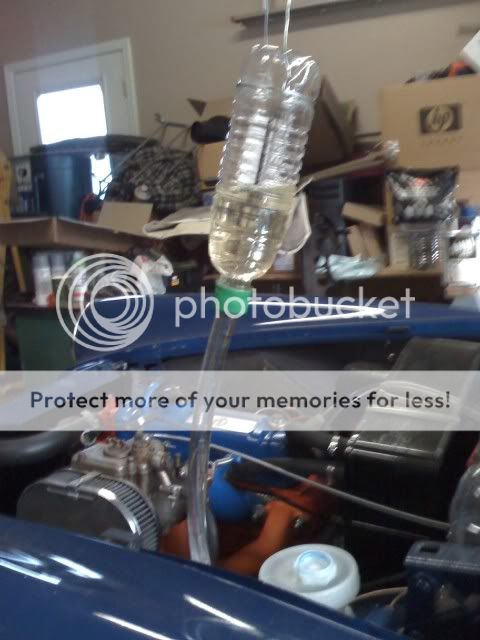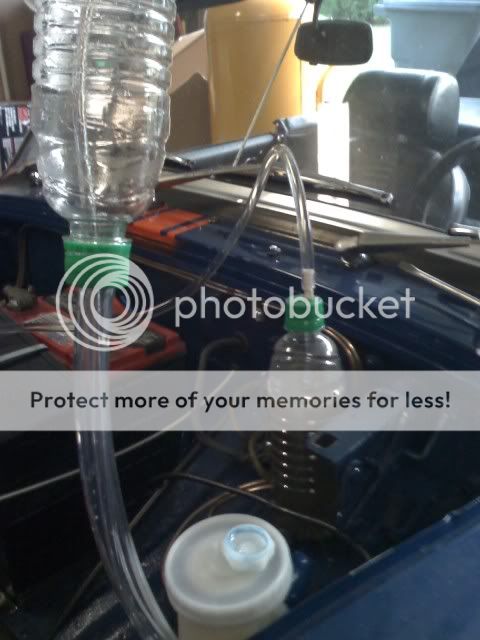dklawson
Yoda
Offline
I have made check valve bleeder hoses out of other surplus bits but I never thought of using a hand soap pump. That's VERY clever! This may seem like a crazy additional step, but I typically remove the bleed nipple and coat it liberally with anti-seize before using the check valve bleeder. The anti-seize prevents air from getting sucked back in along the threads and it prevents the nipple from corroding to the caliper/cylinder over the long haul.
Regarding keeping the reservoir full... I have always run around to the front of the car to check and top up. Recently I was reading a web page relative to my Honda's brakes. There they suggested during a system flush that you use a turkey baster to remove as much old, dirty fluid as possible... then invert a completely full, new bottle of brake fluid in the opening of the master cylinder reservoir. Like an office-type water cooler, it won't overfill or overflow, just maintain a level. Of course, that's not practical on most early LBC brake master's with narrow mouth reservoirs, but it is applicable to later LBCs with wide mouth reservoir openings.
Regarding keeping the reservoir full... I have always run around to the front of the car to check and top up. Recently I was reading a web page relative to my Honda's brakes. There they suggested during a system flush that you use a turkey baster to remove as much old, dirty fluid as possible... then invert a completely full, new bottle of brake fluid in the opening of the master cylinder reservoir. Like an office-type water cooler, it won't overfill or overflow, just maintain a level. Of course, that's not practical on most early LBC brake master's with narrow mouth reservoirs, but it is applicable to later LBCs with wide mouth reservoir openings.

 Hi Guest!
Hi Guest!

 smilie in place of the real @
smilie in place of the real @
 Pretty Please - add it to our Events forum(s) and add to the calendar! >>
Pretty Please - add it to our Events forum(s) and add to the calendar! >> 


